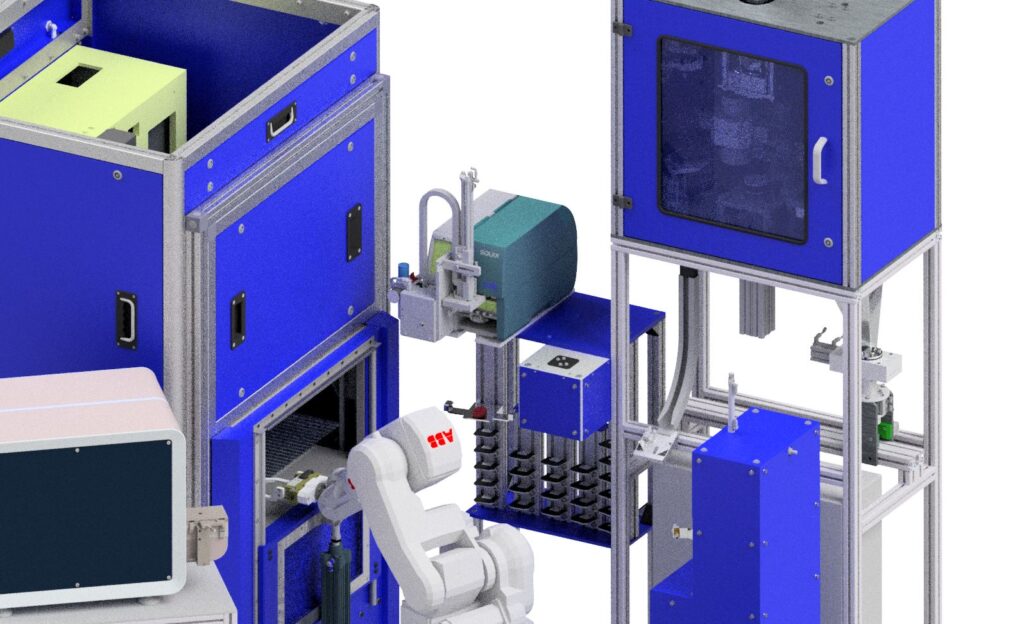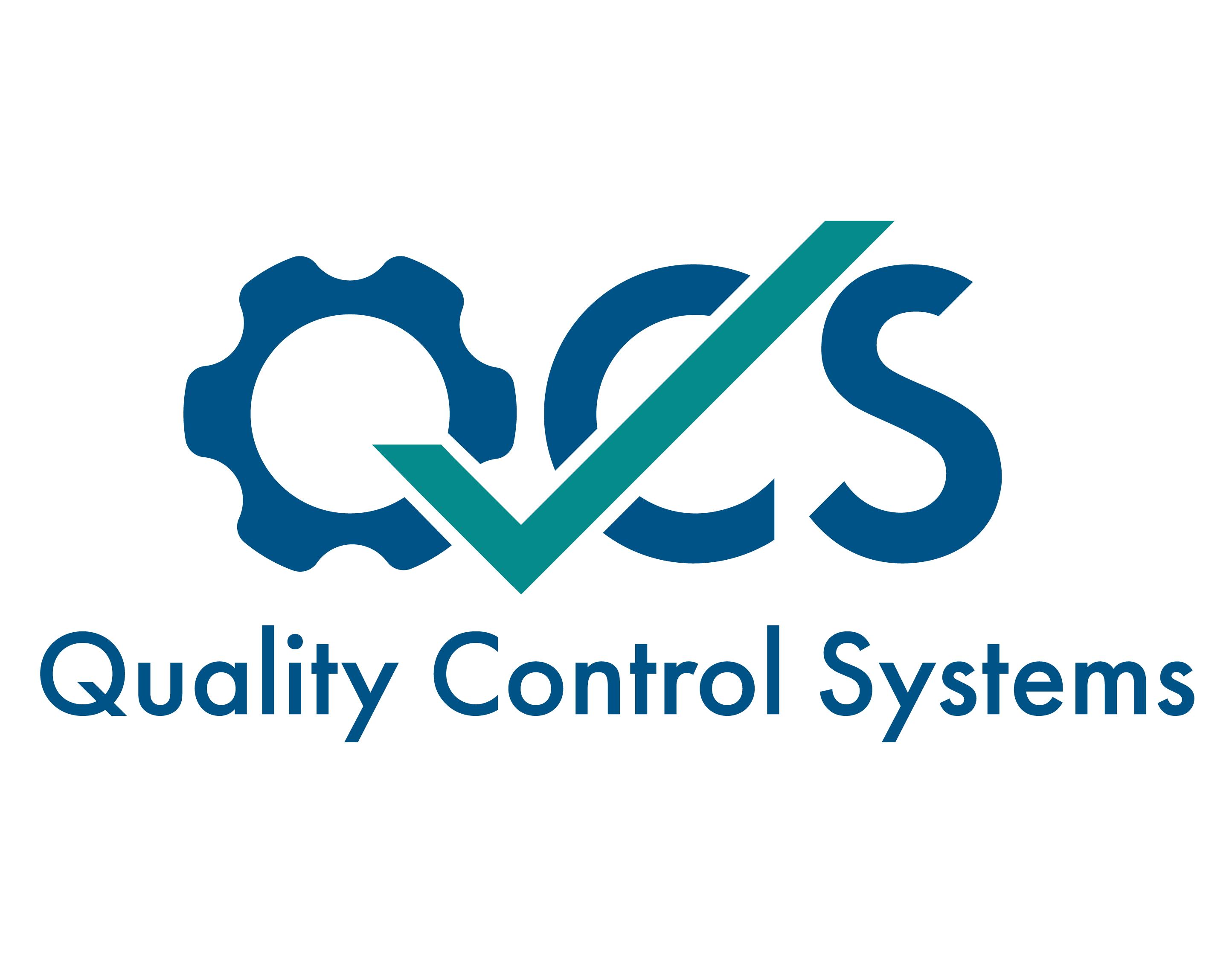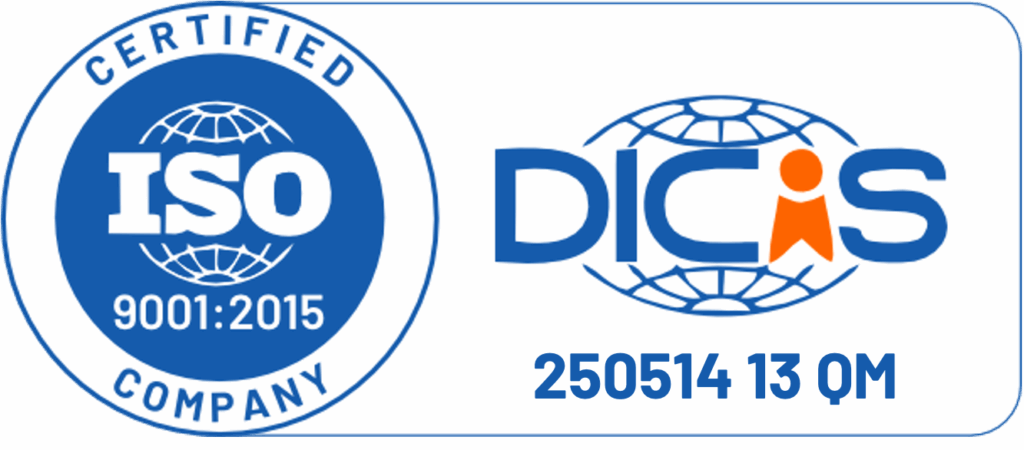Minimize Lab Effort: Lab-Automation for OES, XRF and XRD Analysis I MADE IN GERMANY
Sampli ConLab
The Sampli ConLab is the alternative to the automation of your central lab and can be installed at a mobile location. The Sampli ConLab is a fully automated quality control system for the steel, stainless steel, cast iron, pig iron and non-ferrous metal samples such as aluminum and copper. The automated process for LabAutomation for OES, XRF and XRD includes sample identification and transport, sample preparation and material analysis. Sample feeding, robot control and status monitoring are performed via a computerized control system. To ensure standardized quality assurance, the interior is air-conditioned to a temperature of 20 °C. The entire cycle takes approx. 2 minutes until the analysis result is available. Up to 500 samples per day thus pass through the quality control on average (depending on material).
Technical description
1 The sample is registered on the outside at a touch control terminal via the HMI software and moved into the container via the adjacent flap on a transport carriage. The laboratory is then sealed and the robot takes over all further steps.
2 The programmed robot is the central component of the container. It transports the sample step by step from the slide of the track system to the sample milling machine for image processing to the OES analytical instrument and from there to the label printer and into the sample station for intermediate storage of the sample materials.
4 The sample is fed to the OES analytical instrument and placed precisely on the spark stand, sparked and the data is transferred to your software via an interface. If the results of at least two measurements agree within the permissible tolerances, the OES analysis is complete.
The automation of your central lab can be individually designed and programmed for each of our industrial application (Steel, Cement, Aluminium, Pig Iron. Unlike the Sampli ConLab the central laboratory covers more area, which allows to integrate several milling machines with different parameters and different analysis methods (e.g. OES, XRF, XRD, CNS or LIBS). In addition, it offers the advantage of centralization (e.g., only one software license is needed). On the other hand, the cycle to the analysis result takes longer than in a container, since it cannot be installed directly at the production site (e.g. at the melt pot). The following example is a fully automated central laboratory including sampling, sample transport, sample preparation and sample analysis of steel or nonferrous metals. Sample feeding, robot control and status monitoring are carried out via a higher-level computer-controlled control system. The cycle time depends on the scope of sample preparation.
Technical description
3 The sample is automatically unpacked by pneumatic carrier opener
5 Depending on the sample material, the sample is now prepared for analysis. For solid samples: The sample is cooled by sample cooler and then milled or ground by our milling machine. For powdered samples (e.g. slag): The sample is crushed by our jaw crusher and then formed by our pulverizing and pelletizing machines
6 The sample is analyzed with a stationary OES, XRF, XRD or LIBS analytical instrument (depending on your choice)
Components overview
Hardware:
- Automated Sending Station (Optional: Manual)
- Automated Receiving Station (Optional: Manual)
- Industrial Pneumatic Tube System (incl. Blower system)
- Robot by ABB (Optional: Fanuq, KUKA or Kawasaki)
- Sample Milling Machine (Sampli Mill-Fe-R)
- Safety Fence
- Sample Camera System
- Stationary OES analytical instrument (or XRF, XRD, LIBS)
- Sample Rack
- Sample Label printer (optional: Laser printer)
- Central Control cabinet
Software:
- HMI (Human Machine Interface)
- QCS SAMCOS (Sample Control System)
- PLC infrastructure (Programmable logic controller)
Reduce Your Analysis Time
Reach out to us for optimizing your sample preparation!


